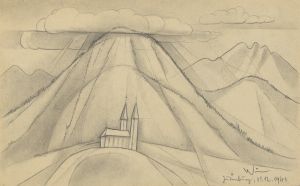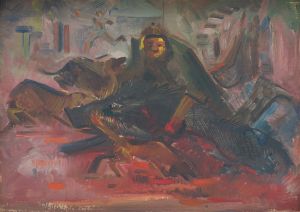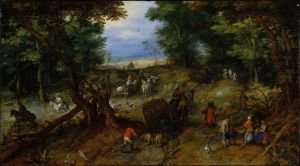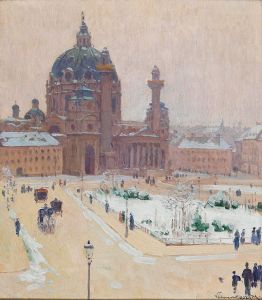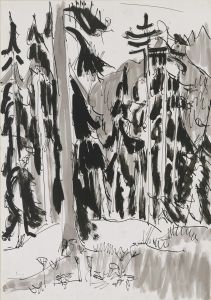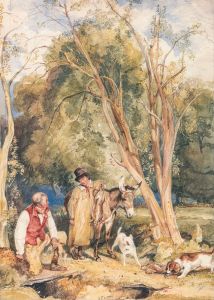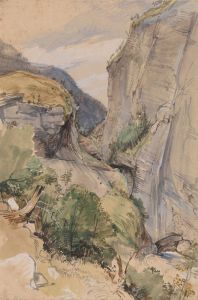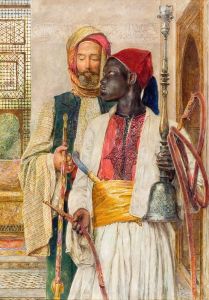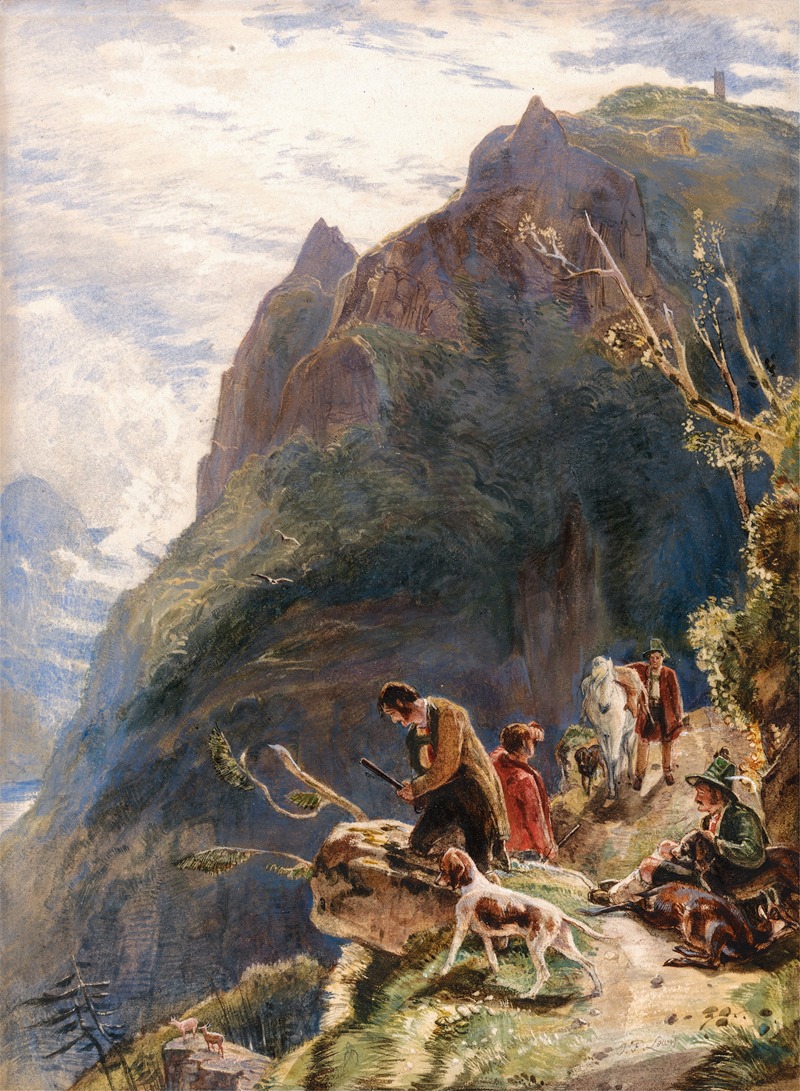
Tyrolese Hunters
A hand-painted replica of John Frederick Lewis’s masterpiece Tyrolese Hunters, meticulously crafted by professional artists to capture the true essence of the original. Each piece is created with museum-quality canvas and rare mineral pigments, carefully painted by experienced artists with delicate brushstrokes and rich, layered colors to perfectly recreate the texture of the original artwork. Unlike machine-printed reproductions, this hand-painted version brings the painting to life, infused with the artist’s emotions and skill in every stroke. Whether for personal collection or home decoration, it instantly elevates the artistic atmosphere of any space.
John Frederick Lewis was a British painter known for his detailed and vibrant Orientalist works. However, there is limited information available specifically about a painting titled "Tyrolese Hunters" by Lewis. It is possible that this painting is lesser-known or not widely documented in art historical records.
John Frederick Lewis was born in London in 1804 and initially gained recognition for his animal and sporting paintings. He was a member of the Royal Academy and spent a significant part of his career traveling, particularly in the Middle East and North Africa. His experiences during these travels greatly influenced his artistic style and subject matter, leading to his reputation as an Orientalist painter.
Lewis's works are celebrated for their meticulous attention to detail and vibrant use of color. He often depicted scenes of everyday life, architecture, and landscapes, capturing the essence of the places he visited with a high degree of realism. His paintings are characterized by their intricate compositions and the use of light and shadow to create depth and atmosphere.
While "Tyrolese Hunters" is not widely referenced in existing literature or major art collections, it is possible that the painting, if it exists, reflects Lewis's early interest in animal and sporting subjects. The Tyrol region, located in the Alps, is known for its picturesque landscapes and hunting traditions, which may have served as inspiration for such a work.
Lewis's broader body of work includes notable paintings such as "The Hhareem" and "The Reception," which exemplify his Orientalist style. These paintings are housed in prominent institutions like the Victoria and Albert Museum and the Tate Gallery, where they continue to be studied and appreciated for their artistic and historical significance.
Despite the lack of specific information on "Tyrolese Hunters," John Frederick Lewis remains an important figure in 19th-century British art. His contributions to the Orientalist genre and his ability to capture the intricate details of his subjects have left a lasting impact on the art world. His works offer a glimpse into the cultural and social dynamics of the regions he visited, providing valuable insights into the 19th-century European perspective on the East.
In summary, while detailed information on "Tyrolese Hunters" is not readily available, John Frederick Lewis's legacy as a painter is well-established. His works continue to be celebrated for their technical skill and the unique perspective they offer on the diverse cultures and landscapes he encountered during his travels.





